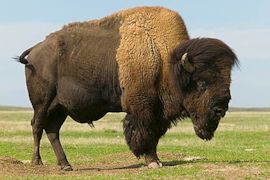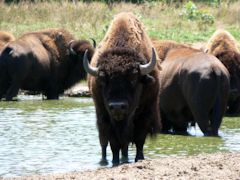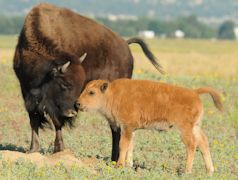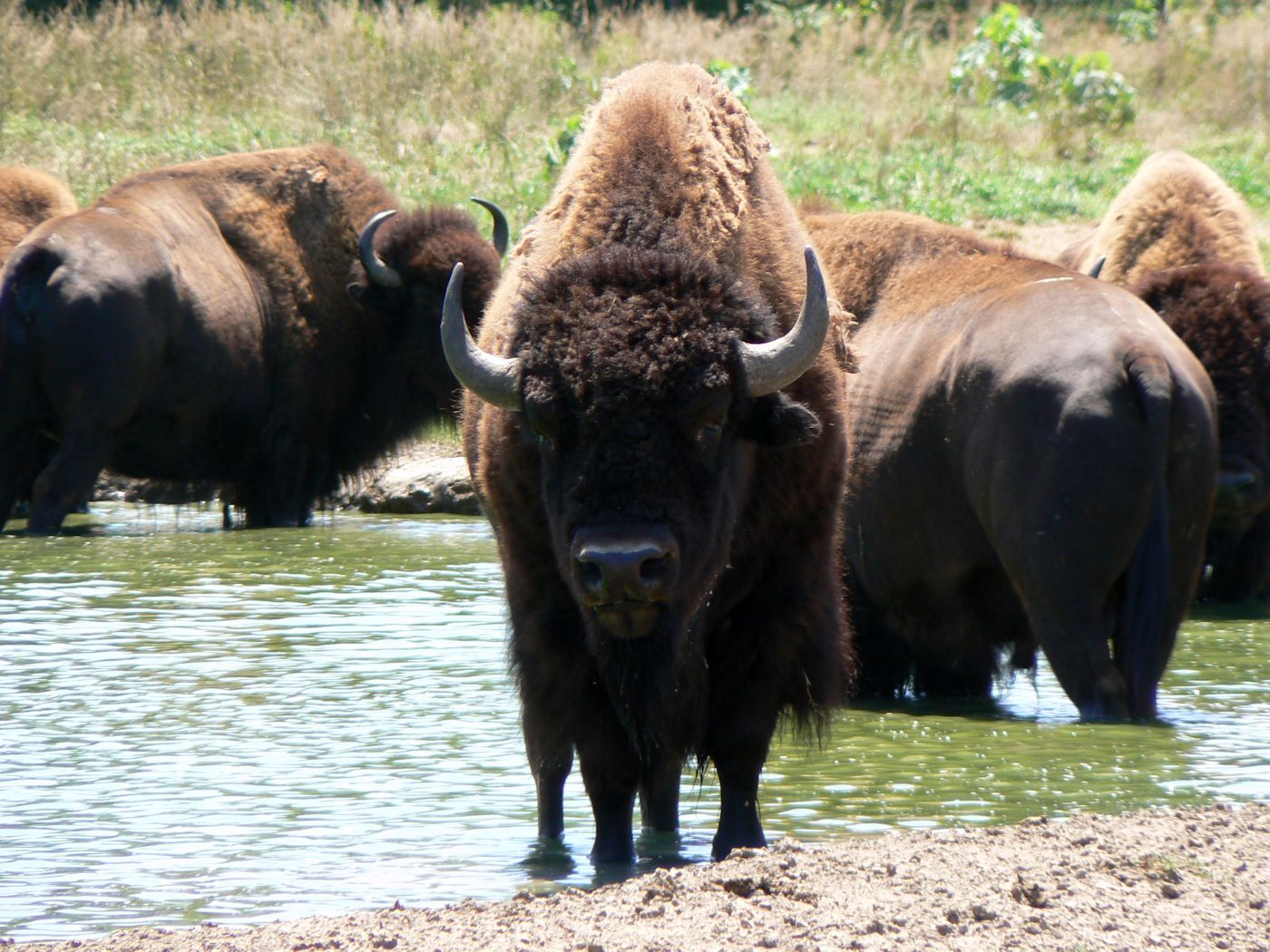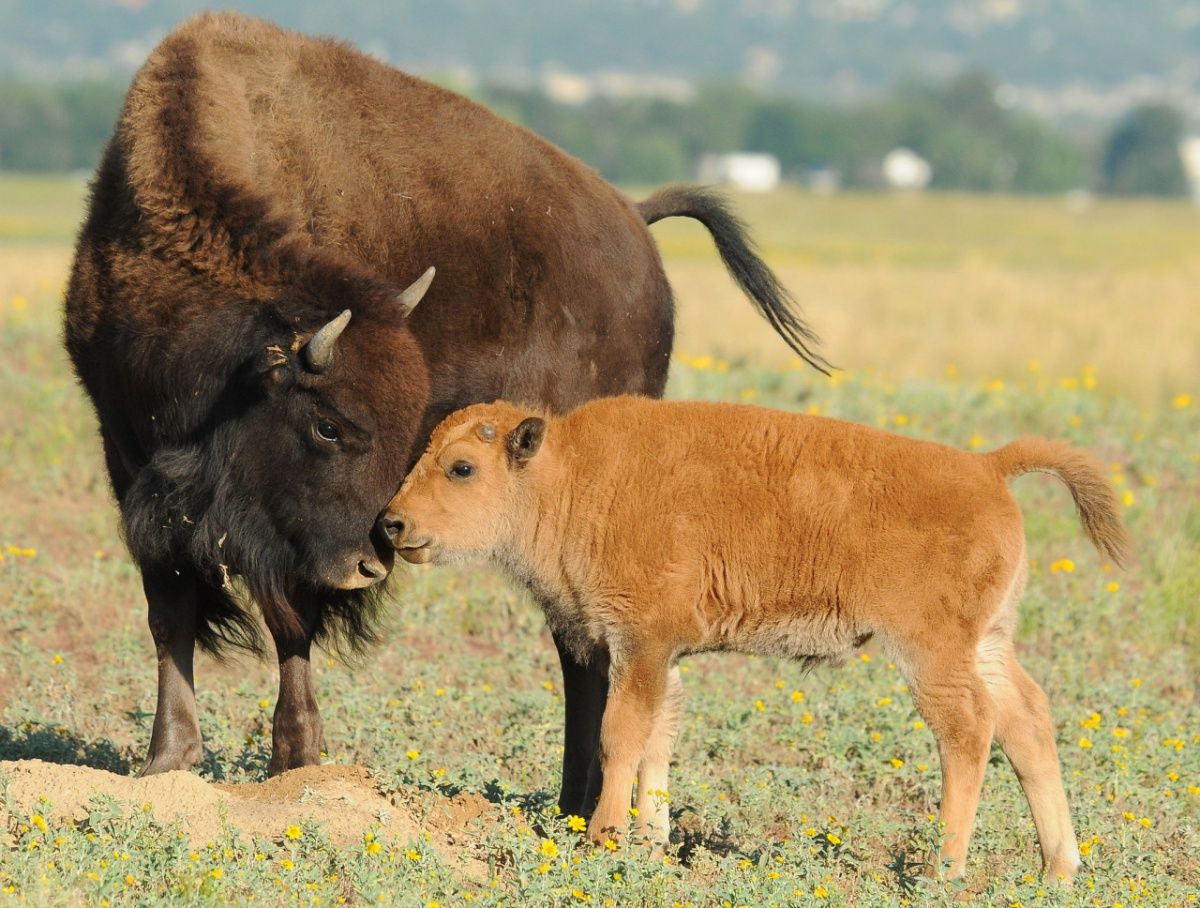Bison
Description
Millions of bison once thundered across North America. These massive animals, characterized by their long, shaggy brown coats, have poor eyesight but acute hearing and an excellent sense of smell.
Historically, the American bison played an essential role in shaping the ecology of the Great Plains. They graze heavily on native grasses and disturb the soil with their hooves, allowing many plant and animal species to flourish. Prairie dogs prefer areas grazed by bison where the grass is short so they can keep a lookout for hungry predators, and wolves once relied on bison herds as a major food source. Today, wild bison are making a small comeback in a few scattered places, but they need more room to roam.
Range
Though bison once roamed across much of North America, today they are “ecologically extinct” as a wild species throughout most of their historic range, except for a few national parks and other small wildlife areas. Yellowstone National Park has the largest population of wild plains bison (about 4,000), and Wood Buffalo National Park has the largest population of wild wood bison (about 10,000). With help from Defenders, two small herds of pure, wild Yellowstone bison were recently reintroduced to Fort Peck and Fort Belknap Indian Reservations.
Reproduction
Bulls and cows do not mingle until breeding season. Dominant bulls “tend” to cows, following the cow around until the cow chooses to mate. During this period, the bull blocks the cow’s vision so that she may not see other competing bulls, and bellows at males striving for the cow’s attention.
Mating Season: June-September, peak activity in July-August
Gestation: 270-285 days. Calf is born April-May.
Litter size: 1 calf

